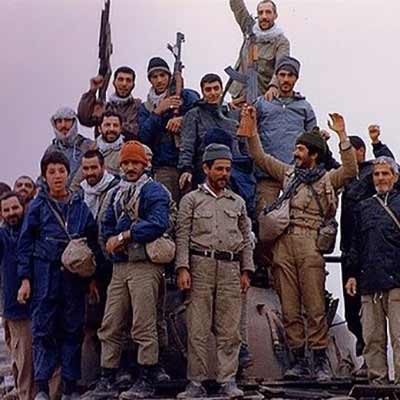Battles
Karbala 6
Afsaneh Sadeqi
177 Views
On January 13, 1987, Operation Karbala 6 was launched in Sumar and Naft Shahr under the command of the Islamic Republic of Iran Army. It aimed at liberating the strategic heights in Sumar and Naft Shahr as taking control over them and advancing towards Iraq’s Naft Khaneh would not only lead to recapturing some parts of Iranian territory but also open a new front line simultaneous with operations Karbala 4 and Karbala 5 in the south and disorganize the Iraqi forces. This operation, if successful, would facilitate Iranian advances in eastern Basrah.[1]
The execution of Operation Karbala 5 near Basrah, due to its strategic importance for Iraq, provoked intense Iraqi military reactions marking the heaviest clashes between Iran and Iraq during the war such that the Iranian forces encountered fierce resistance from the Iraqi army. Accordingly, conducting an operation in Naft Shahr became even more crucial; therefore, Operation Karbala 6 was launched.[2]
This operation began on January 13, 1987, at 10:30 PM, with the code-name “Ya Fatima al-Zahra (s)”. It was launched in the west and north of Sumar to liberate the heights in the area, retaliate against Iraqi attacks and the bombing of Iranian residential areas, destroy the enemy war machine, and disperse Iraqi military forces. The Iranian Army Ground Forces attacked Iraqi troops after crossing multiple obstacles, including extensive minefields, barbed wire fences, and explosive traps.[3]
Artillery units from both sides heavily shelled each other’s positions. Iraq carried out six counterattacks to reclaim lost territories. On Thursday, January 15th, heavy clashes broke out, which intensified on Friday. In an attempt to recapture two critical heights, the Iraqi forces reorganized the remnants of defeated battalions, brought in new troops, and utilized gunship helicopters to launch several heavy counterattacks. However, each time, they faced decisive resistance from the Iranian side and were forced to retreat. Over these two days, several Iraqi units were destroyed, and Iranian forces repelled ten Iraqi counterattacks, capturing the Kangakosh River and the strategic bridges in the area.[4]
Following intense battles, including hand-to-hand combat in some areas, some parts of Iranian territory were liberated.[5]
This operation was mainly aimed at supporting Operation Karbala 5 by reducing the enemy pressure in the south and diverting Iraqi reinforcements towards Basrah, where Operation Karbala 5 was underway. Although not all the planned objectives were fully achieved, 40 square kilometers of Iranian territory were liberated, and the forces engaging in Operation Karbala 5 received full support.[6]
The liberated areas and installations during this operation included the heights 249, 241, 289, 306, 285, 267, 294, 286, 325, 295, 265, 252, and 277 in the northeastern of Naft Shahr, along with the strategic bridges over the Kangakosh River. During the battle, 11 Iraqi aircraft, 2 helicopters, 20 tanks and armored vehicles, 10 boats, several ammunition depots, and numerous Iraqi vehicles were destroyed. Iraqi units eliminated in this operation included the 1st and 2nd battalions of the 108th Brigade, the 1st battalion of the 606th Brigade, a battalion from the 80th Infantry Brigade, a battalion from the 45th Brigade, a commando unit from the 16th Division, the 2nd Mountain Brigade, and the 703rd, 94th, 426th, and 506th brigades. Iraqi casualties were estimated at around 3000 killed and wounded. Iranian forces also captured dozens of Iraqi tanks, armored vehicles, and a large number of light weapons and ammunition.[7]
After Operation Karbala 6, Iraq pretended to be the winner by claiming that the Iranian forces had failed to achieve their objectives as the operation was one of the largest battles. The Iraqi regime announced that Iran had tried to recapture Naft Shahr but it was defeated. In response, the head of the Iranian War Propaganda Staff stated that the objective of Operation Karbala 6 was not to liberate Naft Shahr. Rather, Iranians sought to take control over specific heights and areas, which was achieved in Sumar and near Naft Shahr. In reality, Iran mainly wanted to demonstrate its military capability to fight simultaneously on two fronts against Iraq.[8]
[1] Sabouri, Raheleh, Sayeh-e Tak: Khaterat-e Sarvan-e Piyadeh Chatrbaz Rahim Afshari (The Shadow of the Vine: Memoirs of Infantry Paratrooper Captain Rahim Afshari), Tehran: Sooreh Mehr, 2015, p. 112.
[2] Atlas-e Jang-e Iran va Araq: Feshordeh-ye Nabardha-ye Zamini 31 Shahrivar 1359 - 29 Mordad 1367 (Atlas of Iran-Iraq War: Summary of Ground Battles from 22 September 1980 to 20 August 1988), Tehran: Markaz-e Motaleat va Tahqiqat-e Jang-e Sepah, 2008, p. 62.
[3] Samiei, Ali, Karmaneh-ye Tawsifi-ye Amaliyat-e Razmandegan-e Eslam dar Tool-e Hasht Sal-e Defa-e Muqaddas (Descriptive Report of Muslim Warriors’ Operations during the Eight-Year Sacred Defense), Tehran: Moavenat-e Tablighat va Entesharat-e Nirou-ye Zamini-ye Sepah, 1997, p. 310.
[4] Ibid., p. 311.
[5] Ibid., p. 312.
[6] Jafari, Mojtaba, Atlas-e Nabardha-ye Mandegar: Amaliyat-e Nirouha-ye Zamini dar Hasht Sal-e Defa-e Muqaddas Shahrivar 1359 - Mordad 1367 (Atlas of Enduring Battles: Ground Forces’ Operations during the Eight-Year Sacred Defense from September 1980 to August 1988), Tehran: Navid Tarahan, 2004, p. 128.
[7] Ahmadzadeh, Mikaeil, Farzandan-e Khak: Ba Negahi be Naqsh-e Takavaran dar Karbala-ye 6 (Children of the Soil: A Look at the Role of Commandos in Operation Karbala 6), Tehran: Nashr-e AJA, 2009, p. 106.
[8] Samiei, Ali, Karmaneh-ye Tawsifi-ye Amaliyat-e Razmandegan-e Eslam dar Tool-e Hasht Sal-e Defa-e Muqaddas (Descriptive Report of Muslim Warriors’ Operations during the Eight-Year Sacred Defense), p. 312.





